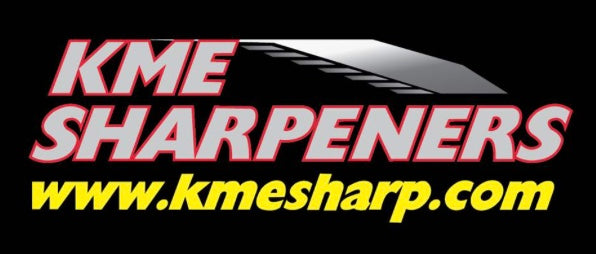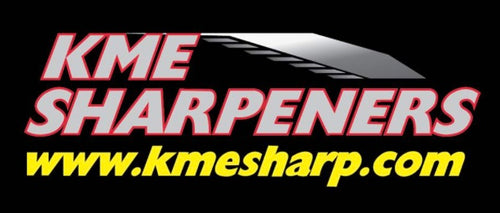FAQs
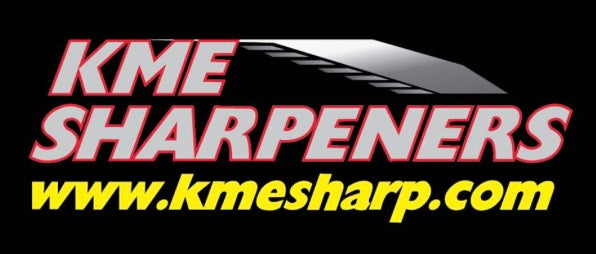
Knife Sharpening
A. The easiest way to find the correct angle on any blade is to color the factory bevel with a permanent marker, eyeball the angle as close as you can, then take a few swipes with a dry stone to see where the ink comes off. If the ink is gone from the cutting edge but not the shoulder of the bevel, that's telling you that the angle is set a bit too high...If the ink is removed from the shoulder of the bevel but not the cutting edge, that means the angle is set a bit too low. Adjust the angle up/down till the ink is being removed from the whole bevel and that will be the correct angle. BTW, it's better to error a little on the high side than on the low side. Once you know the correct angle setting to use for a particular blade or BH there's no need to color the bevels anymore.
Note: The angle scales on all clamp type systems are relative. The distance a blade extends out in front of the clamp also influences the angle.
A: That depends on the particular job you’re doing. No one type is the best for all sharpening jobs.
A. These are basic guidelines for stone selection.
NOTE: There are many variables though, like exactly how dull is the blade? Do we need to remove a lot of stock to develop the bevels? and how hard is the steel itself? Check out the next few FAQs for details.
Diamond stone Pros:
Diamond stones are far more aggressive than either ceramics or Arkansas stones. The coarser grit diamonds are great for rapid stock removal and for taking an edge from dead blunt to very sharp quickly. Diamonds are the best choice for sharpening blades made from very hard steels with Rockwell hardness above the mid 50s. A coarse or x-coarse diamond can be worth its weight in gold when sharpening/restoring severely damaged blades.
Diamonds are also a good choice for people who are new to sharpening and those who consider themselves to be “sharpening impaired”. This is because diamonds produce very good results quickly.
Diamond Stone Cons:
While diamond stones are great for speed sharpening, they’re not as good as fine ceramics or Arkansas for the final polishing needed to develop a true surgical edge. Diamonds are more expensive than either ceramic or Arkansas stones and contrary to popular belief they do wear out and will need to be replaced from time to time.
Note: While it’s never a good idea to push on any stone while sharpening in order to speed things up, this is particularly true with diamond stones. Diamond stones are manufactured by literally soldering diamond particles to a steel substrate (electroplating). Applying excessive pressure while sharpening will quickly destroy the stones by dislodging the particles. Use a light touch and let the stones do the work.
Arkansas Stones Pros:
Arkansas stones are polishing stones. A basic Hard Arkansas is still one of the best polishing stones available. They are inexpensive and very long lasting. Very fine grit Arkansas stones like the black or translucent will polish blade bevels far beyond factory sharp.
Arkansas Stone Cons:
Arkansas stones are not intended for rapid stock removal but, for polishing and refining an edge to surgically sharp. If you were to take a very dull blade and try to sharpen it using only an Arkansas stone you would spend hours trying to get the blade sharp but would likely only succeed in polishing the dull edge. You need to finish "grinding" or “profiling” the edge first with something more aggressive like a diamond stone or coarse ceramic.
Ceramic stones are kind of the middle ground between the diamonds and the Arkansas. They come in a wide variety of grits and can be made from various materials like silicon carbide (carberundum), or aluminum oxide (India and water stones), CBN (cubit boron nitride) or other abrasive materials.
The standard stones (ceramic and Arkansas) are our "go to" stones for any blade that is even remotely sharp to begin with. The X-coarse silicon carbide is a very aggressive stock removal stone but it will wear quickly. Use this stone for quickly reprofiling the bevels on extremely dull blades. The coarse aluminum oxide ceramics are pretty aggressive and the fine side is reasonably fine. Diamonds stones, files, or automotive wet/dry sandpaper are better choices for fast stock removal, then go to the ceramics and finish with the Arkansas.
That's a quick run down but hopefully it shows that none of the above stones are "the best". It's more a question of which type of stone is the best choice for the job you're doing. It’s a good idea to have a variety of different stones so that sharpening will always be quick and easy.
Broadhead Sharpening
A. Because the broadhead sharpener is a fixed angle guide, the specific angle will vary depending on the width of the broadhead. Wide broadheads will sharpen at slightly lower angles than narrow heads do. Most will be between 24-28 degrees. While different brands/styles will sharpen at slightly different angles, individual broadheads and blades will sharpen at exactly the same angle time after time. The object of the fixed angle design is precise, consistent repeatability.
There are a couple of reasons we settled on this higher angle range. Sharpening at higher angles has 3 advantages over sharpening at lower angles:
• First, you need to remove less metal to restore the cutting edge, which translates to faster sharpening times.
• This also means broadheads/blades can be sharpened many times without reducing the weight of the head.
• Additionally, sharpening at higher angles results in stronger, and much more durable cutting edges.
A: You're correct. The BH sharpener will sharpen most broadheads at an angle that is a few degrees higher than the original factory bevels. There are a couple of advantages to creating this "duplex" bevel... Since we're only working the very cutting edge, less stock needs to be removed so blades will sharpen very quickly. It also allows for broadheads and replacement blades to be re-sharpened repeatedly without affecting the total BH weight. A duplex bevel also results in a much more durable cutting edge which is even more important with broadheads than it is with knives.
A: Yes, for single bevel broadheads, do 95% of the "work" on the bevel side. First, raise a burr with your coarse stone. As soon as you’re sure you have a continuous burr running the length of the blade, move to the next grit. Don't remove the burr just yet. Continue to polish/refine the bevel side with the finer stones. As you progress through the grits, the burr will get slightly heavier. After you polish the bevel on your finest stone, flip the clamp and using only forward strokes and very light pressure, do the absolute minimum necessary to remove the burr. Then finish with a few alternating passes on each side of the blade. Again, using all forward strokes. At this point the head should be shaving hair. To take it to the next level of sharpness, strop the blade on a piece of dry corrugated cardboard. Just tear a good sized flap off a cardboard box and with the head still in the sharpener, make about 8 backward passes over the cardboard on each side of the blade, then a few one- flip, one-flip... again all backward strokes on the cardboard.
A: That depends on the particular job you’re doing. No one type is the best for all sharpening jobs.
A. Because an inside curve blade design can’t align with the stone’s flat surface, these type heads/blades can’t be sharpened with the broadhead sharpener. Our knife sharpener can be used to sharpen some concave broadheads but not the very small ones. Using a hand held round diamond file or ceramic rod is the best way to sharpen these.
A. No. Fixed 3 blade broadheads need to be sharpened freehand by pushing or pulling them along a flat stone by hand.
A. Yes! In fact, you can get them much sharper than factory sharp in just a couple minutes or less. Many people have difficulty believing this but it’s absolutely true. Most manufacturers do an excellent job of providing very sharp replacement blades but, they have to sharpen hundreds of thousands of blades each year. The time they have to sharpen each blade is measured in seconds. On the other hand, most bowhunters will only sharpen a couple dozen blades each year. Our concern is not how sharp can we get this blade in 15 seconds…it’s simply how sharp can we get this blade… period. It’s a good idea to tune-up even brand new blades before hunting with them.
A. Yes, except for the very narrowest blades and blades with concave designs. Mechanical blades are generally narrower than standard replacement blades and bleeders. For any clamp type sharpener to work, the blade being sharpened must be wide enough for the clamp to grip the back of the blade and still have enough blade extending out in front of the clamp to contact the stone. Otherwise, the clamp itself will contact the stone. The clearance between the clamp and stone can be increased by running the clamp over some sandpaper just like you were sharpening a blade. Tighten the clamp with no blade in the jaws, then run the sharpener over the sandpaper on both sides of the clamp to sand down the front edges of the jaws. Just be careful not to over do it. You want the tips of the jaws very thin but not so thin that they’re actually sharpened.
A. Generally we don't recommend it. Not that it's not possible, just not ideal. We encourage people to pre-sharpen glue on broadheads before mounting them so that if you need to touch them up on the shaft it's much simpler/quicker. There are a couple of reasons for this: one- the weight of the shaft will defeat the self-aligning feature of the sharpener. This is easy enough to overcome by just putting a couple fingertips on the clamp to keep the blade on the stone. The second difficulty of sharpening on the shaft is the amount of working room needed because the arrow has to move with the sharpener and broadhead as you sharpen. The knife sharpener is a much better choice for touching up mounted heads.
Theory Deep Dives
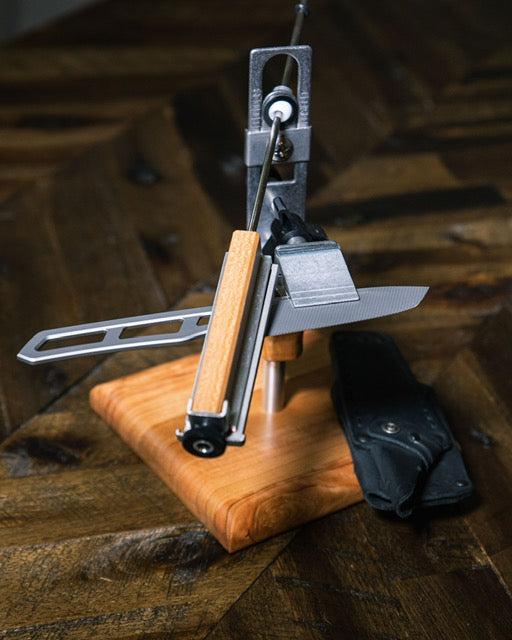
Basic Sharpening Theory
Many people struggle with sharpening and have difficulty attaining a satisfactory edge. Others can sharpen anything and don't understand what the big deal is. Most likely, the difference is that the ones who can sharpen well have a good understanding of sharpening theory and therefore understand, and can visualize mentally, what is happening to the blade on a microscopic level.
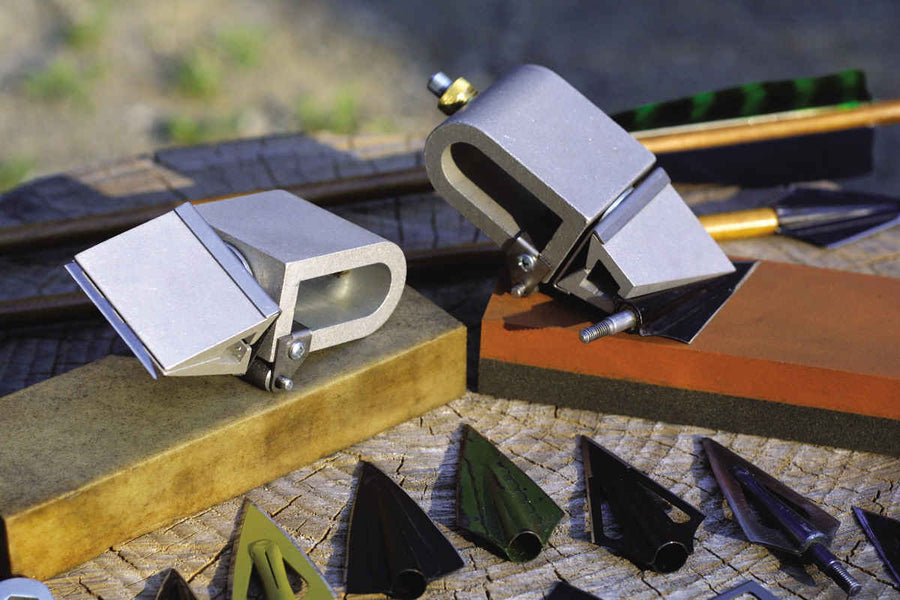
Broadhead How To
Different broadhead styles require slightly different techniques, especially for the initial out of the box sharpening. There are three basic broadhead/blade designs. Some brands are combinations of these, and some brands have a chisel tip resulting in a double angle blade- you can sharpen any of these by tailoring your sharpening technique to your particular broadhead style.
Get More KME on YouTube
Our YouTube channel includes detailed, easy-to-follow videos that teach you how put the sharpest edges on your tools.
